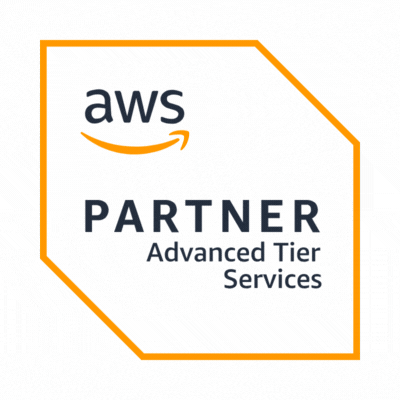In today's rapidly evolving cloud computing landscape, effective cloud cost optimization is essential for businesses looking to maximize their return on investment. This detailed guide will explore various strategies, tools, and best practices for optimizing cloud costs, focusing specifically on AWS services.
Introduction to Cloud Cost Optimization
Cloud cost optimization involves strategically managing cloud resources to minimize costs while maintaining performance and scalability. This process includes right-sizing resources, automating cost management, and leveraging advanced pricing models and tools.
Industry Insights and Recent Trends
The public cloud market continues to grow, with end-user spending on public cloud services expected to rise significantly. According to Gartner, spending on public cloud services is projected to increase by 21.7% to $597.3 billion in 2023. This growth underscores the importance of effective cloud cost optimization strategies to manage and control cloud expenditures.
Automating Cloud Cost Optimization with AI
Automation in cloud cost optimization harnesses AI to dynamically manage resources, predict cost trends, and automate routine tasks, leading to significant cost savings and operational efficiency.
AI-Powered Tools
Tools like AWS Cost Explorer and AWS Budgets utilize machine learning to forecast costs and usage, providing actionable insights for cost-saving opportunities.
Predictive Analytics
AI can predict future usage patterns and adjust resources proactively, ensuring optimal performance without overspending.
Automated Policies
Implementing automated policies for resource scaling and lifecycle management reduces manual intervention, ensuring resources are used efficiently.
By integrating AI into your cloud cost optimization strategy, you can achieve a proactive and dynamic approach to managing cloud expenses, leading to sustained cost savings and improved resource utilization.
Custom Solutions for Cloud Cost Optimization
Tailored solutions for cloud cost optimization address the unique needs of different businesses, providing customized strategies to manage and reduce cloud expenditures effectively.
Right-Sizing Resources
Evaluate your current infrastructure to identify underutilized resources and adjust their size to match actual usage. This includes analyzing CPU, memory, and storage needs to avoid over-provisioning.
Custom Pricing Models
Choose the right pricing model (on-demand, reserved, or spot instances) based on your workload characteristics. Reserved instances offer significant savings for predictable workloads, while spot instances are cost-effective for non-critical tasks.
Cost Allocation and Tagging
Implement comprehensive tagging policies to track and allocate costs accurately across different departments and projects, enhancing visibility and accountability.
Customizing your cloud cost optimization strategy ensures that you can align your cloud expenditures with your business goals, achieving a balance between cost efficiency and performance.
Advanced Techniques for Cloud Cost Management
Advanced cloud cost management techniques involve leveraging sophisticated tools and strategies to monitor, manage, and optimize cloud spending proactively.
Using AWS Cost Management Tools
AWS Cost Explorer
Offers detailed reports and visualizations of your AWS spending, helping you identify trends and anomalies.
AWS Budgets
Allows you to set custom budget thresholds and receive alerts when your spending approaches or exceeds these limits.
AWS Cost and Usage Reports (CURs)
Provide granular data on your AWS usage and costs, enabling deep analysis and cost allocation.
Governance Policies
Establish governance frameworks to control cloud resource provisioning, set spending limits, and define usage guidelines. This helps prevent cost overruns and ensures efficient resource use.
Regular Audits and Optimization
Conduct periodic audits of your cloud infrastructure to identify and eliminate unused or underutilized resources. Utilize tools like AWS Trusted Advisor to receive recommendations for cost optimization.
Advanced cloud cost management techniques enable organizations to maintain control over their cloud expenditures, ensuring resources are used efficiently and costs are kept in check.
Best Practices for AWS Cloud Cost Optimization
Optimizing AWS cloud costs requires a strategic approach, leveraging AWS-specific tools and best practices to manage and reduce expenses effectively.
Right-Sizing Instances
Continuously monitor and adjust the size of your instances to match workload requirements, avoiding over-provisioning and underutilization.
Leveraging Reserved Instances and Savings Plans
Commit to long-term usage of resources to benefit from significant cost savings compared to on-demand pricing.
Optimizing Storage Solutions
Use appropriate storage classes for different data types (e.g., S3 Standard for frequently accessed data and S3 Glacier for archival storage) to optimize storage costs.
Automating Resource Management
Utilize AWS Lambda for serverless computing, which automatically scales based on demand, ensuring you only pay for what you use.
Monitoring and Alerts
Set up automated alerts for budget overages and unusual spending patterns to take corrective actions promptly.
By implementing these best practices, you can optimize your AWS cloud costs effectively, ensuring that your cloud spending aligns with your business objectives while maintaining optimal performance.
The Takeaway
Cloud cost optimization is a continuous process that involves a combination of strategic planning, advanced tools, and best practices. By automating cost management, customizing solutions, and leveraging advanced techniques, businesses can achieve significant cost savings and operational efficiency in their cloud environments.























